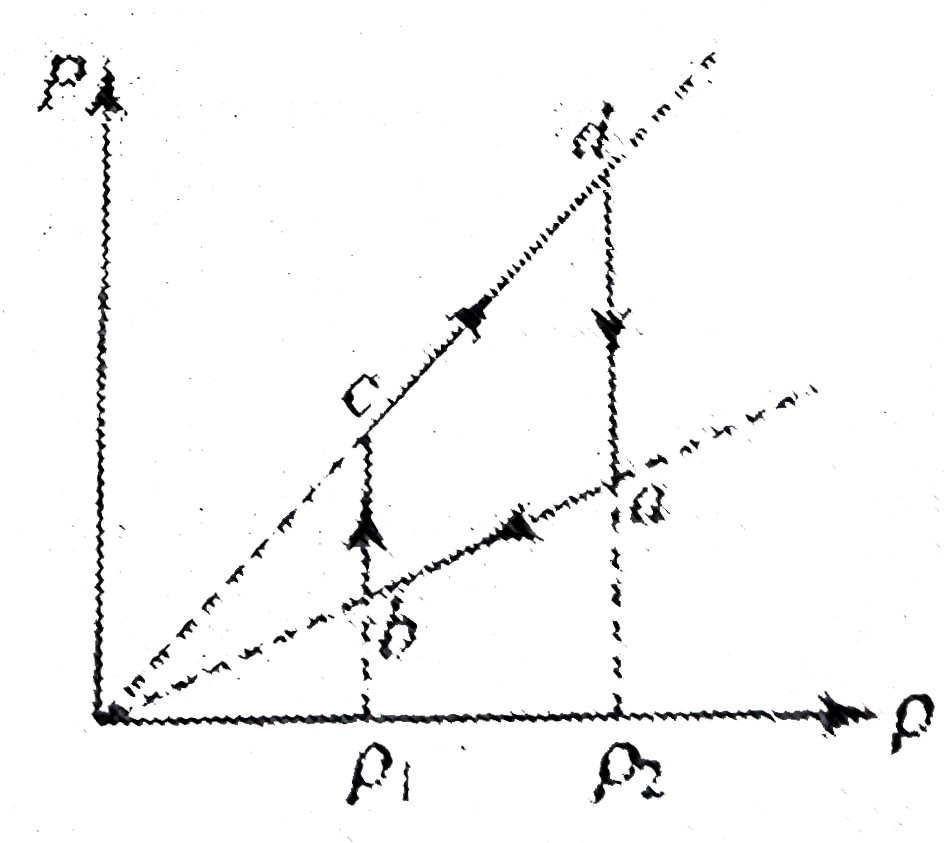An ideal gas is that which
cannot be liquified
can be easily liquified
has strong inter molecular forces
has a larger size of molecules
The correct Answer is:A
To answer the question "An ideal gas is that which," we need to analyze the characteristics of an ideal gas based on the options provided.
1. Understanding Ideal Gas: An ideal gas is a theoretical gas composed of many particles that are in constant random motion. It follows the gas laws perfectly under all conditions of temperature and pressure.
2. Characteristics of Ideal Gas:
- Ideal gases do not have intermolecular forces acting between the particles.
- The volume of the gas particles themselves is negligible compared to the volume of the container.
- Ideal gases can be described by the Ideal Gas Law: PV=nRT.
3. Analyzing the Options:
- Option 1: Cannot be liquefied: This is consistent with the behavior of an ideal gas. Since there are no intermolecular forces, ideal gases do not condense into liquids under normal conditions.
- Option 2: Can be easily liquefied: This is incorrect. Real gases can be liquefied, but ideal gases cannot.
- Option 3: Has strong intermolecular forces: This is incorrect. Ideal gases are characterized by the absence of intermolecular forces.
- Option 4: Has a larger size of molecules: This is also incorrect. Ideal gases are considered to have negligible size.
4. Conclusion: Based on the analysis, the correct answer is that an ideal gas is one that "cannot be liquefied," which corresponds to Option 1.
Final Answer:
An ideal gas is that which cannot be liquefied.
- Ideal gases do not have intermolecular forces acting between the particles.
- The volume of the gas particles themselves is negligible compared to the volume of the container.
- Ideal gases can be described by the Ideal Gas Law: PV=nRT.
- Option 1: Cannot be liquefied: This is consistent with the behavior of an ideal gas. Since there are no intermolecular forces, ideal gases do not condense into liquids under normal conditions.
- Option 2: Can be easily liquefied: This is incorrect. Real gases can be liquefied, but ideal gases cannot.
- Option 3: Has strong intermolecular forces: This is incorrect. Ideal gases are characterized by the absence of intermolecular forces.
- Option 4: Has a larger size of molecules: This is also incorrect. Ideal gases are considered to have negligible size.
An ideal gas is that which cannot be liquefied.
Similar Questions
Knowledge Check
- Question 1 - Select One
A sample of an ideal gas is heated doubling its absolute temperature . Which of the following statements best describes the result of heating the gas?
AThe root-mean-square speed of gas molecules doubles.BThe average kinetic energy of the gas molecules increases by a factor of √2.CThe average kinetic energy of the gas molecules increases by a factor of 4.DThe speeds of the gas molecules cover a wide range, bu the root-man-square speed increases by a factor of √2.
Using the kinetic theory derive an expression for the pressure exerted by an ideal gas, stating clearly the assumption which you make.
View SolutionAn ideal gas undergoes a cyclic process abcda which is shown by pressure-density curve,
 View Solution
View SolutionAn ideal gas undergoes a cyclic process abcda which is shown by pressure-density curve,
 View Solution
View SolutionThe given (p - U) graph shows the variation of internal energy of an ideal gas with increase in pressure. Which of the following pressure - volume graph is equivalent to this graph ?
 .View Solution
.View SolutionThe value of γ=CP/CV is 4/3 for an adaibatic process of an ideal gas for which internal energy U=K+nPV. Find the value of n (K is constant) :
View SolutionFor an ideal gas :
View SolutionFor an ideal gas :
View Solution

